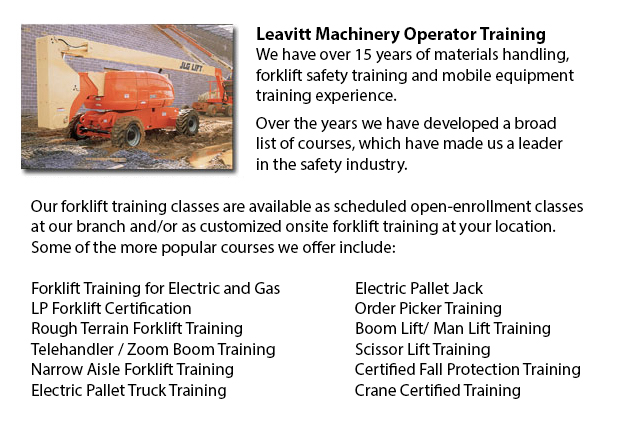
Aerial Boom Lift Training Fort Mcmurray - For individuals who operate or supervise the use of aerial lift platforms, correct aerial boom lift Training is needed. The aerial lift platform is for lifting individuals, tools and materials to elevated work places. They are normally used to access utility lines and other above ground job-sites. There are different types of aerial booms lifts, like articulating boom lifts, extension boom lifts and cherry pickers. There are two categories of boom lift: "telescopic" and "knuckle".
Boom lift training is important and normally involves the fundamental operations, equipment and safety issues. Workers are required when working with mobile equipment to know the dangers, safe work practices and rules. Training program materials provide an introduction to the uses, terminology, concepts and skills required for employees to acquire experience in operating boom lifts. The material is aimed at safety professionals, workers and machine operators.
This training is adaptive, cost-effective and educational for your company. A safe and effective workplace can help a company attain overall high levels of production. Less workplace incidents take place in workplaces with strict safety policies. All equipment operators must be trained and evaluated. They need knowledge of present safety standards. They should understand and follow rules set forth by the local governing authorities and their employer.
It is the employer's responsibility to make certain that workers who must use boom lifts are trained in their safe use. Every different type of workplace equipment needs its own machine operator certification. Certifications are offered for articulating booms, aerial work platforms, industrial forklift trucks, scissor lifts, and so forth. Employees who are fully trained work more effectively and efficiently compared to untrained workers, who need more supervision. Right training and instruction saves resources in the long run.
Training is the best prevention for the primary reasons for workplace deaths: electrocutions, falls and collapses or tip overs. Other than training, the best way to avoid workplace accidents is to operate and maintain aerial work platforms based on the manufacturer's instructions. Allow for the total weight of the worker, tools and materials when adhering to load limits. Never override hydraulic, mechanical or electrical safety devices. Employees must be securely held in the basket utilizing a restraining belt or body harness with an attached lanyard. Do not move lift equipment while workers are on the elevated platform. Workers must be careful not to position themselves between the beams or joists and basket rails in order to prevent being crushed. Energized overhead power lines should be at least 10 feet away from the lift machine. It is recommended that workers always assume power lines and wires may be energized, even if they are down or appear to be insulated. If working on an incline, set brakes and make use of wheel chocks.
-
Telehandler Training Fort Mcmurray
Telehandler Training Fort Mcmurray - Telehandlers or also called Telescopic handlers are very popular piece of heavy construction equipment most often utilized in agriculture and construction industries. These machines have extreme reaching capabilit... More -
Counterbalance Forklift Training Fort Mcmurray
Counterbalance Forklift Training Fort Mcmurray - Counterbalance Forklift Training courses are always in high demand. The Counterbalance forklift is a forklift that is made along with a weight that counters the balance, evenly spreading the weight of... More -
Heavy Equipment Training School Fort Mcmurray
Heavy Equipment Training School Fort Mcmurray - HEO or the heavy equipment operator courses will provide you with the knowledge and skills required in order to enter the workforce as an entry level heavy machine operator. In this 12 week course in ad... More -
Operator Safety Training, Re-Qualification Training, In-House Instructor Training in Fort McMurray
Used in just about all boat yards, industrial construction sites or warehouse operations, the forklift is a very important component in order to help pick up and transfer supplies. The reach feature of a lift truck could help improve the applications... More -
Heavy Equipment License Fort Mcmurray
Heavy Equipment License Fort Mcmurray - A heavy equipment license can be obtained by finishing a certification and preparation course at a private training school or a vocational school. This license would qualify you to operate various types of heav... More -
Boom Lift License Fort Mcmurray
Boom Lift License Fort Mcmurray - To operate an aerial boom lift, operators must be licensed through training that can be obtained utilizing both practical training and classroom sessions and by obtaining a boom lift license. Instruction must be give... More -
Skid Steer Loader Training in Fort McMurray
A skid-steer loader is actually an engine powered machine that consists of a small and rigid frame. It is outfitted along with lift arms which are used to attach to different labor saving attachments and tools. Normally, skid-steer loaders are four-w... More -
Order Picker Ticket Fort Mcmurray
Order Picker Ticket Fort Mcmurray - Order picker's enables warehouse employees to lift pallets using forks. Likewise called a stock picker, this electrically-powered equipment is like a forklift except that an order picker is likewise utilized to lif... More

Forklift Training Fort McMurray
TOLL FREE: 1-888-254-6157
Fort McMurray, Alberta
forklifttrainingfortmcmurray.com
Email Us
About Us


